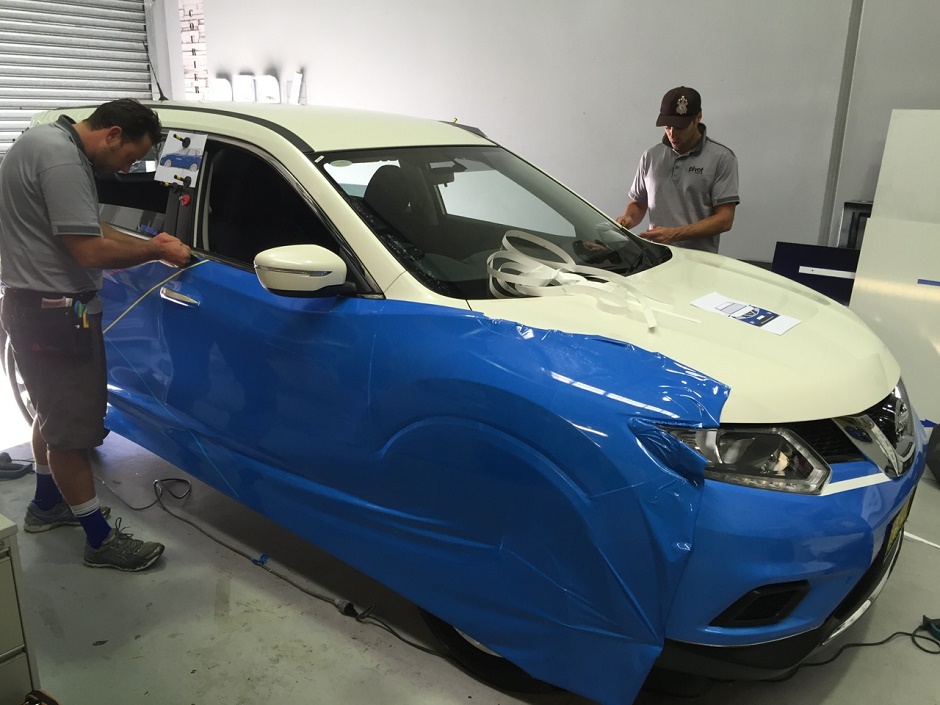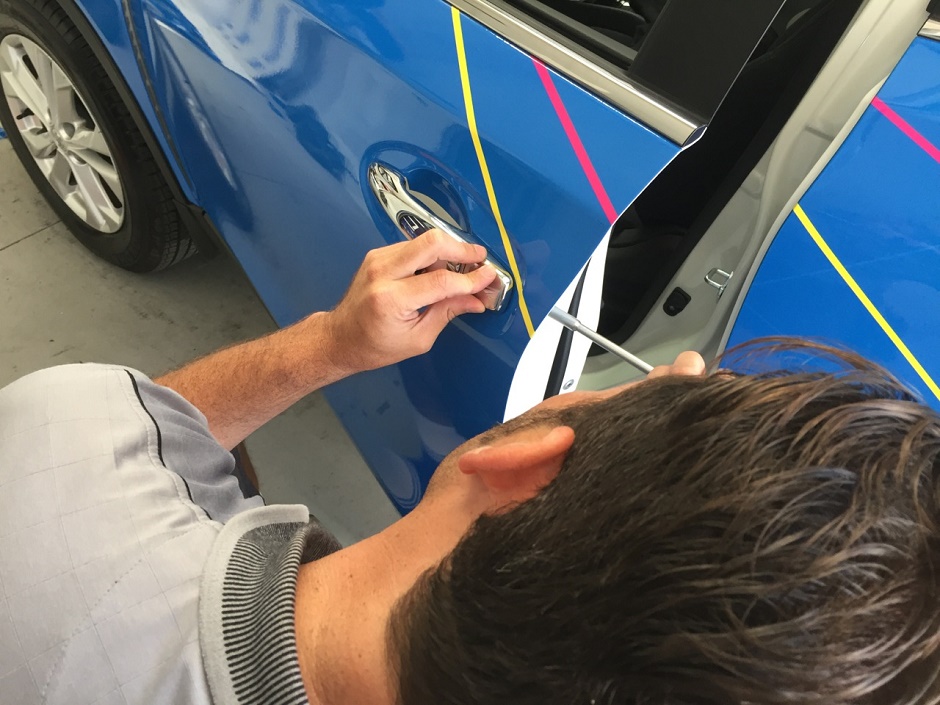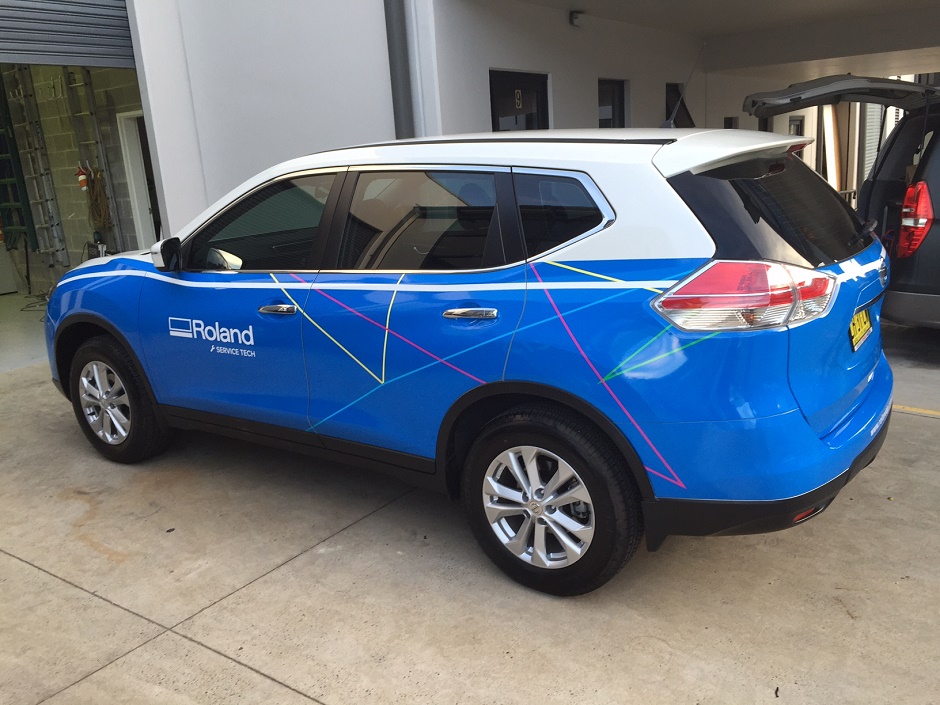Recently we began printing and re-wrapping the Roland DG service cars, starting with the X-Trail. The designs for the new vehicle wraps were based on creating something fresh and clean, but still engaging and in line with Roland DG branding. The CMYK geometric lines help to add a little flavour to the design.
The vehicle wraps were produced in house on the TrueVIS VG-640. Take a look below at pictures of the process and of the end result.



Are you also looking at vehicle wrap design? Read our Top 10 Tips for Vehicle Wrap Design:
1. Do size up the job and take photos
Before you start designing, size up the vehicle. Photograph the vehicle from all sides and take key measurements of the car, then scale the photos accordingly in your design software. Shoot direct shots (not at an angle) and pay attention to body breaks, extreme curves, rivets, door handles and other protruding parts. By taking the time to shoot the vehicle, you can plan for any vehicle customisations or paint and body issues. This is vital when quoting and planning a wrap, and also for letting a client know what your shop is able to do for them.2. Don’t rely solely on digital templates without seeing the vehicle
A template can only tell you so much about a vehicle. It can provide you with a dimensional outline of the vehicle and a digital canvas to work on but won’t alert you to any unique problems you may encounter. Printing and cutting a wrap and then discovering while installing that the client has attached a custom bumper could send you straight back to the drawing board and cost you valuable time and money.3. Do research your client and create a plan-of-action
Like any creative undertaking, knowledge is the first step on the path to great design. Don’t start any design until you’ve talked with your client about designs they like, designs they’ve seen, and their own expectations of colour, message and composition. It’s helpful to bring together all this information in a brief or job outline to ensure that your customer and everyone is on the same page.4. Don’t rush headlong into your design
Communicate with your client before starting your design and pay attention to their specific design needs and wants so you can avoid unnecessary redesigns.5. Do use bold colours and bold design
Vehicle wrap design has a history of being big, bold and exciting, and for good reason – it needs to get noticed. When creating your design, think big and create larger-than-life graphics that people will notice and remember.6. Don’t overcrowd your design
Even though vehicle wrap designs are traditionally colourful and eye-catching, this does not mean that your design should be crowded with imagery and design elements. The most effective vehicle designs are colourful and dynamic but they typically show a high-level of sophistication in composition and design. It’s always preferable to be simple and obvious with your design, so eliminate noisy backgrounds and unnecessary clutter to allow the message to stand out.7. Do make an important point of your client’s brand and message
Unlike print design, where the viewer has time to absorb the visuals and message, a vehicle wrap has to be immediate and there is little time to capture the viewer’s attention, so make the brand and message immediately understood and memorable.8. Don’t put too much advertising copy in your design
Too much copy is distracting on a vehicle wrap that is only seen briefly. Try to keep copy to a minimum. A strong brand identity, a web or social address, a phone number and maybe in some cases a very short message are all you should consider for copy to highlight the message takeaway.9. Do get sign-off from your client before you print
Do not do anything until the client has approved your artwork! No matter what deadline restraints you are under, printing something before your client has approved it is simply asking for trouble.10. Don’t disregard the needs of your client
The relationship between designer and client is a partnership. As the design expert, you have to give sound advice and steer your client in the right direction, but ultimately, they are the one paying for the service and should be satisfied with the result. Make sure you have the lines of communication open. It often takes a job or two to build trust with a new client but will pay-off in the long run when they keep coming back for repeat business.Contributed by Ben Fellowes, Roland DGA Sr. Copywriter, with contribution from Matt Richart, Co-Owner of Digital EFX Wraps.
